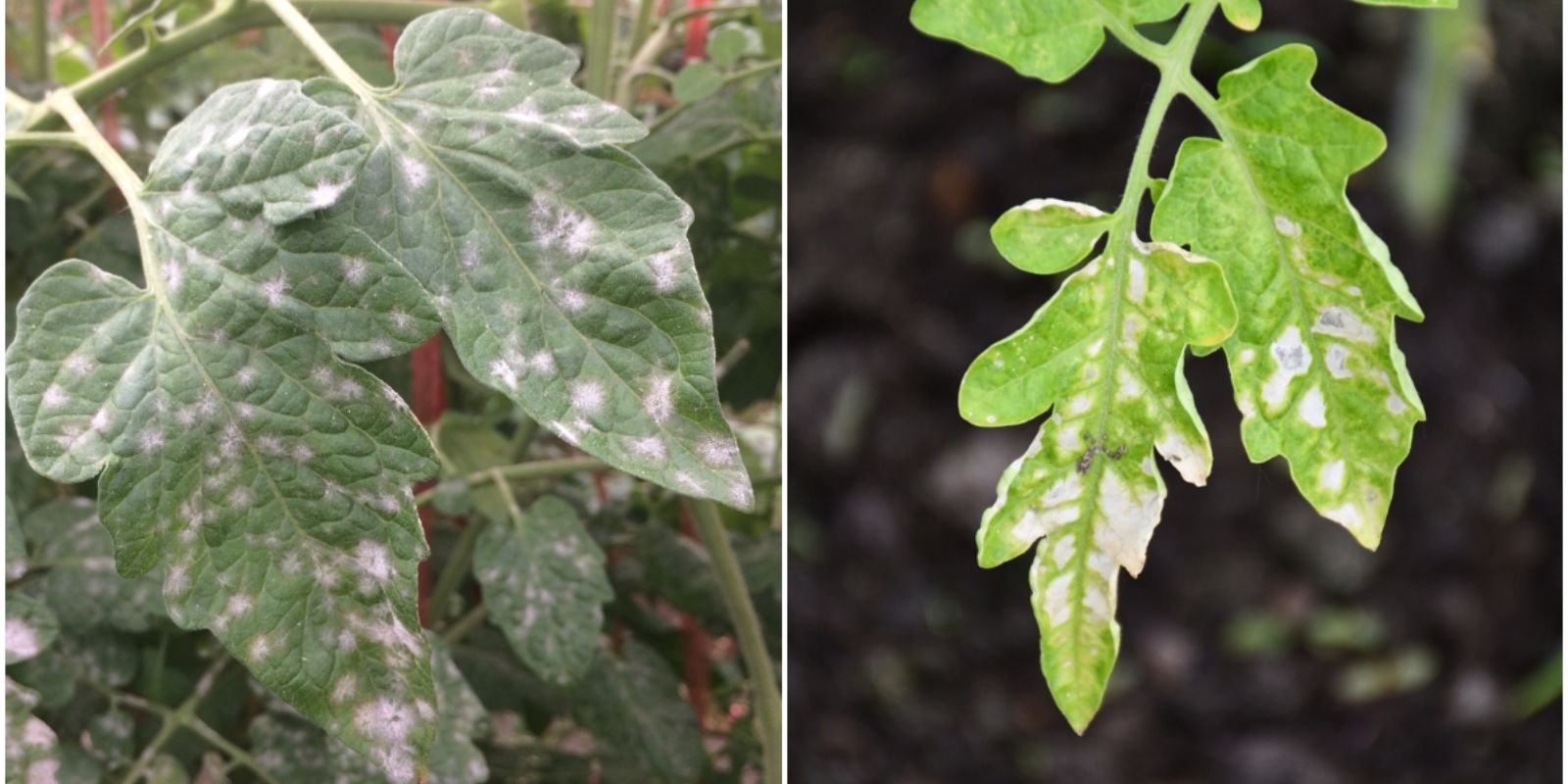Tomatoes are one of the most popular plants in home gardens. Their vibrant fruits and versatility in cooking make them a staple for gardeners everywhere. However, like all plants, tomatoes can fall prey to various issues, with white spots on their leaves being a common concern. If you’ve noticed these unsightly spots on your tomato leaves, don’t worry—this article will guide you through understanding their causes, how to treat them, and how to prevent them in the future.
Understanding the Causes of White Spots on Tomato Leaves
White spots on tomato leaves can stem from several causes. Identifying the root of the problem is key to finding the right solution. Here are the main culprits:
- Powdery Mildew
- What It Is: Powdery mildew is a fungal disease that appears as a white, powdery substance on the surface of leaves.
- Causes: High humidity, poor air circulation, and overly dense plant spacing can encourage this fungus to spread.
- Sunscald or Sunburn
- What It Is: When leaves are exposed to intense sunlight, they can develop white or pale spots due to damage.
- Causes: Excessive exposure to direct sunlight or sudden changes in environmental conditions.
- Spider Mites
- What They Are: These tiny pests feed on plant sap, leaving white or yellow stippling marks on leaves.
- Causes: Dry and warm conditions often lead to spider mite infestations.
- Septoria Leaf Spot
- What It Is: A fungal disease that causes small, circular white spots with dark borders.
- Causes: Wet and humid conditions, especially when water sits on leaves for long periods.
- Nutritional Deficiency
- What It Is: A lack of essential nutrients, like calcium or magnesium, can sometimes cause white discoloration on leaves.
- Causes: Poor soil health or imbalanced fertilization.
- Chemical Damage
- What It Is: Using strong pesticides or fertilizers incorrectly can cause white spots due to chemical burns.
- Causes: Misapplication of products, especially during sunny weather.
Step-by-Step Solutions to Treat White Spots on Tomato Leaves
- Identify the Cause
Closely inspect your plants to determine whether the issue is fungal, pest-related, or environmental. Look for powdery substances, pests, or patterns of discoloration. - Prune Affected Leaves
- Carefully remove leaves with white spots to prevent the spread of diseases or pests.
- Dispose of the infected leaves away from the garden to avoid contamination.
- Improve Air Circulation
- Space tomato plants properly to reduce overcrowding.
- Prune excess foliage to improve airflow around the plants, especially at the base.
- Treat Powdery Mildew and Fungal Diseases
- Use organic fungicides like neem oil, sulfur sprays, or baking soda solutions.
- For DIY treatment, mix 1 tablespoon of baking soda, 1 tablespoon of vegetable oil, and 1 gallon of water, then spray on affected leaves.
- Control Pests
- Use neem oil or insecticidal soap to manage spider mites and other pests.
- Introduce natural predators like ladybugs to keep pest populations in check.
- Prevent Sunscald
- Provide temporary shade during extreme heat using shade cloth or garden netting.
- Water consistently to help plants recover from stress caused by sunburn.
- Fertilize Correctly
- Test your soil to ensure it has balanced nutrients. Add compost or organic fertilizers rich in calcium and magnesium if deficiencies are detected.
- Avoid over-fertilizing, as excessive salts can damage leaves.
- Water Smartly
- Always water tomato plants at the base to keep leaves dry.
- Water in the morning to allow excess moisture to evaporate during the day.
- Maintain Garden Hygiene
- Regularly clean up fallen leaves and plant debris to reduce fungal spores and pest breeding grounds.
- Rotate crops yearly to prevent recurring diseases in the soil.
How to Prevent White Spots on Tomato Leaves
- Choose Resistant Varieties
Plant disease-resistant tomato varieties to minimize the risk of fungal infections. - Practice Crop Rotation
Avoid planting tomatoes in the same spot every year to reduce the buildup of soil-borne pathogens. - Mulch Your Plants
Add organic mulch around the base of your tomato plants to retain moisture, regulate soil temperature, and prevent soil-borne diseases from splashing onto leaves. - Monitor Plant Health Regularly
Check plants frequently for early signs of white spots, pests, or stress. Early detection helps in quick and effective intervention. - Maintain Proper Spacing
Ensure plants are spaced adequately to prevent overcrowding and promote good airflow.
When to Seek Professional Help
If the white spots persist despite your best efforts, it may be time to consult a local gardening expert or extension service. They can help identify specific issues and recommend treatments suited to your region and climate.
Conclusion: Keep Your Tomato Plants Thriving
White spots on tomato leaves can be alarming, but with the right knowledge and care, you can tackle this issue head-on. From fungal diseases to pests, understanding the cause is key to restoring your plants to health. By following the steps outlined above and adopting preventative measures, your tomatoes will continue to grow strong and yield delicious fruits.
Let’s hear from you!
Have you ever dealt with white spots on tomato leaves? Share your experiences, tips, and success stories in the comments!
#TomatoCare #GardeningTips #OrganicGardening #HealthyPlants #GrowYourOwnFood #GardeningHacks #PlantCare

